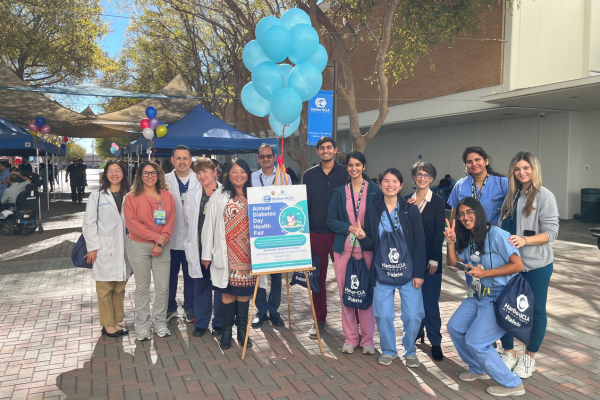Lessons Learned From Harbor-UCLA Medical Center’s Diabetes Clinic

Rajesh Garg, MD leads a team at Harbor-UCLA Medical Center’s Diabetes Clinic that focuses on improving diabetes care for under-resourced populations. Many of their patients experience food, housing, and other insecurities that make managing diabetes challenging. In this environment, Dr. Garg and his team work to do as much as they can for their patients in the time they have with them and often must make decisions on the highest priority area for a specific visit.
Prior to working with AACE on the CDC-funded Specialty Societies Advancing Adult Immunizations grant in 2022, vaccination efforts were not a part of the diabetes clinic’s efforts. Dr. Garg sought to change that! He and his team tried different approaches as part of their quality improvement efforts, with mixed success. The team saw immediate improvements when they added prompts to the nurses’ check-in list to reconcile a patient’s vaccination status with California’s Immunization Information Registry (CAIR2). This change improved their vaccination assessment and documentation from 0% to 100%! This was an efficient strategy to ensure the endocrinologist seeing the patient was aware of their vaccination status before the appointment began.
The team was also able to implement efficiencies by automating vaccination orders as much as possible. The order automation and vaccination reconciliation by the nurses helped Dr. Garg and his team integrate vaccinations into patient visits without relying on the endocrinologist to lead the change, thus allowing the endocrinologist to focus on other priority areas. Experience from other QI interventions helped them learn that building strategies around the full care team, and especially the nurses, were more successful and sustainable.
Over the last three years, Dr. Garg has learned many lessons from their SSAAI QI projects. Here are some of his take-aways:
- When changing processes, begin with one change. A single adjustment can be meaningful and sustainable over time.
- Consider where changes can be made by various members of the team and where changes make the most sense based on responsibilities, time management, and workflow. The goal is to make improvements to processes that are efficient and effective, not burdensome on the team. As an example, if the team can look for ways to make workflow adjustments that support the priorities for each appointment, the endocrinologist can be better positioned to maximize time with the patient. The nurses now ask patients in Dr. Garg’s clinic to remove their socks and shoes during the rooming process so that when the endocrinologist enters the room, they can immediately see the condition of the patient’s feet.
- Documentation and automation are vital parts of any quality improvement effort! If processes are established and streamlined, vaccines can be ordered without physician approval, which creates efficiencies for the entire team and for the patient. And the automation creates the documentation automatically.
- Focus on changes that are not dependent upon the physician to implement during the patient encounter. Think of the improvements starting with the check-in process and how this will support improvements throughout the entire visit.
- Be flexible! Making adjustments when implementing QI efforts is pivotal to sustainable change. Learn from your experience and modify your plans to help meet your goals.
Moving forward, Dr. Garg and his team plan to continue working on the vaccine quality improvement efforts as well as applying these lessons to other areas, with the goal of making sustainable changes and continuing to improve over time.
Thank you, Dr. Garg!
